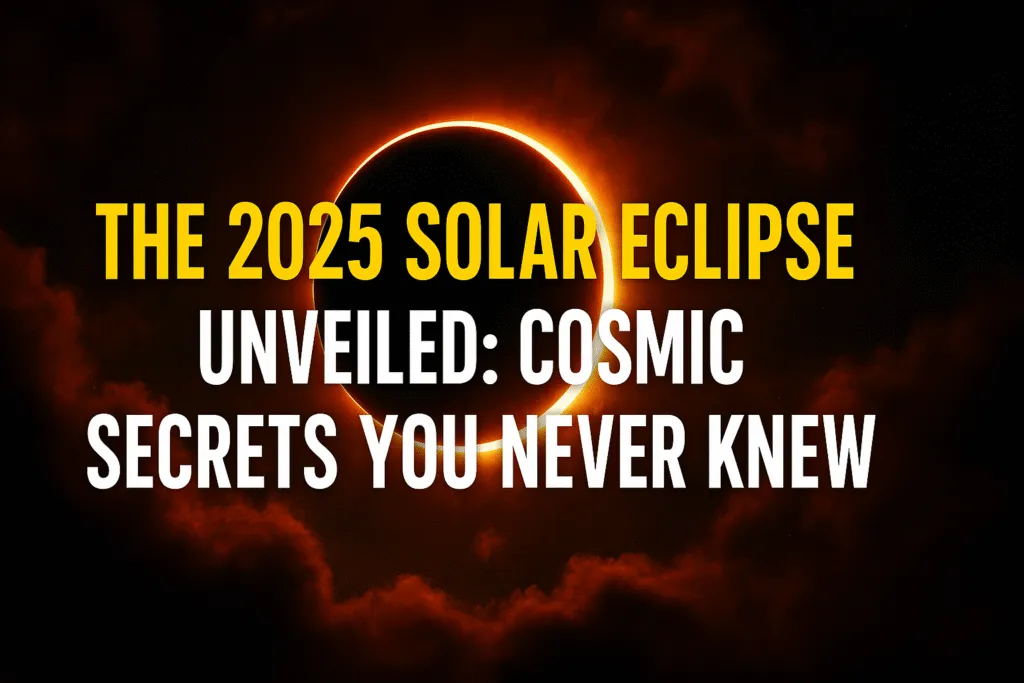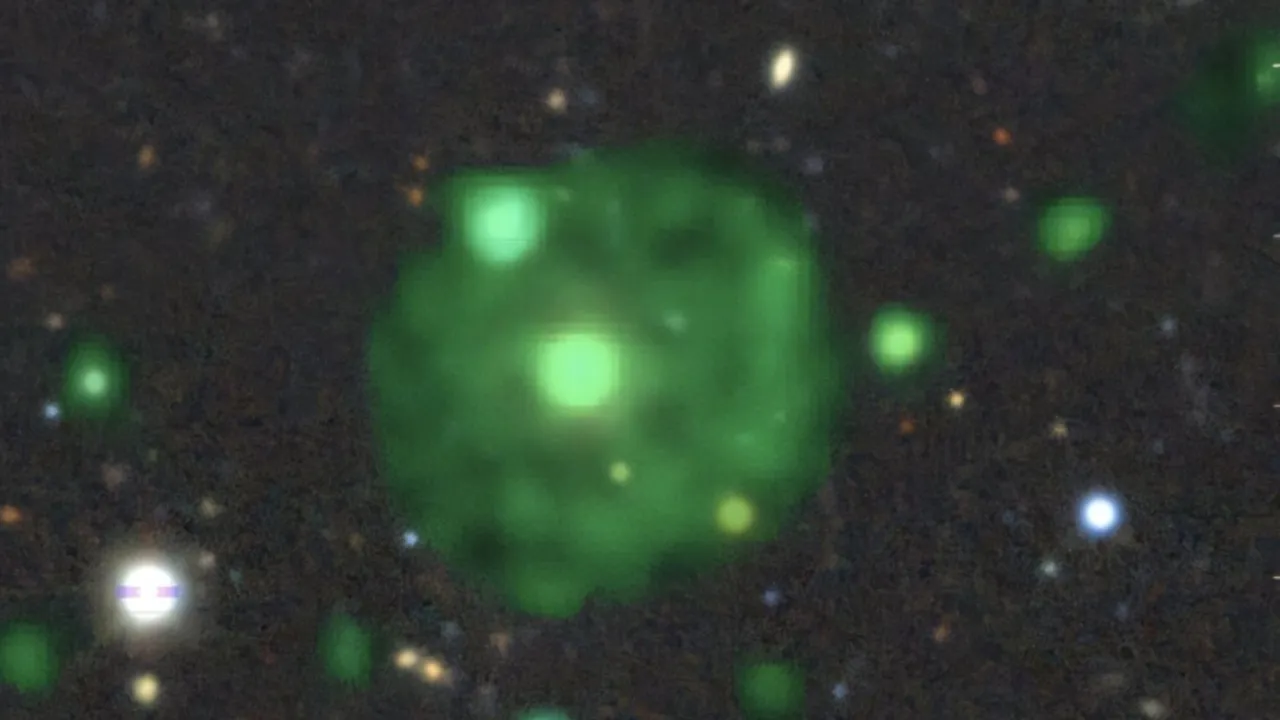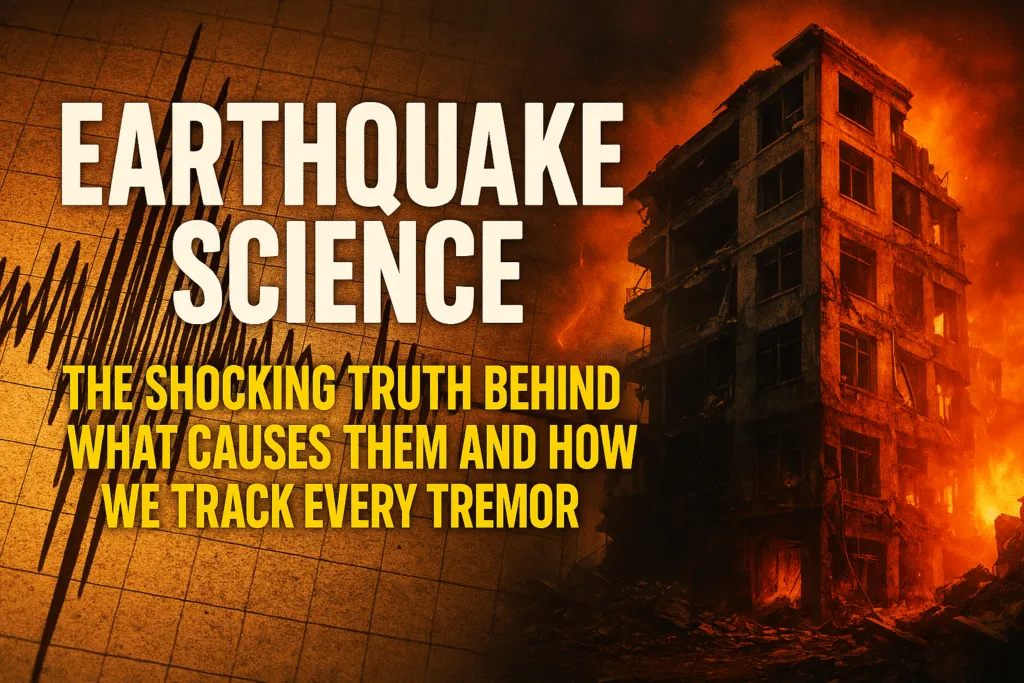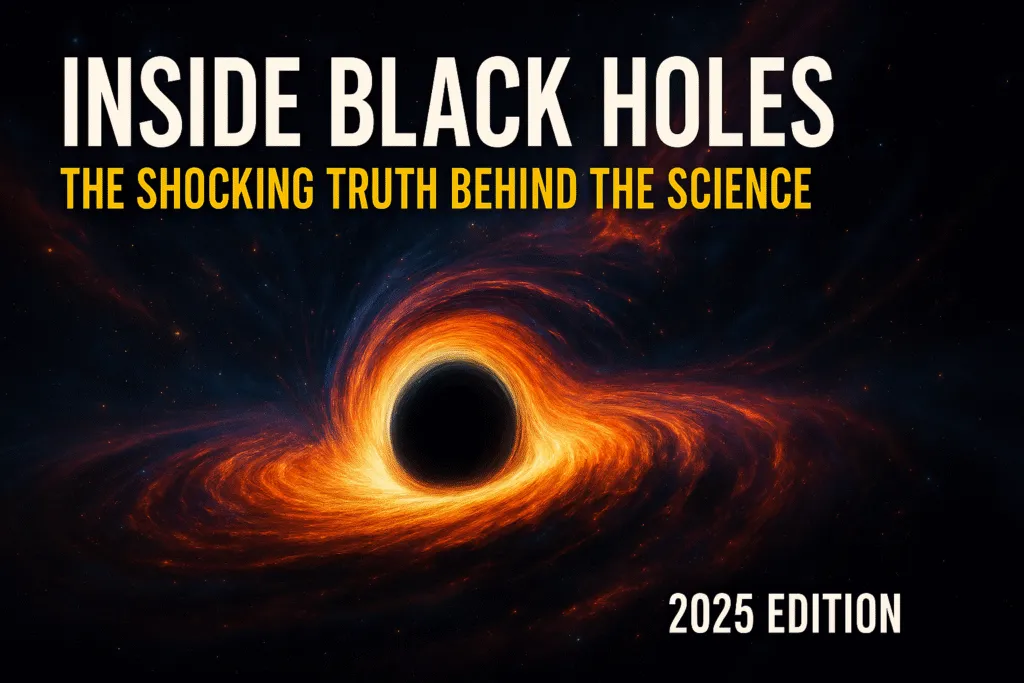Introduction – What Is a Solar Eclipse?
A solar eclipse is one of the most fascinating natural events witnessed from Earth. It occurs when the Moon comes directly between the Earth and the Sun, casting a shadow on the Earth’s surface and temporarily blocking sunlight from reaching certain regions. A solar eclipse can only take place during a new moon phase, but it doesn’t happen every month because the Moon’s orbit is tilted relative to the Earth’s orbit around the Sun. Due to this tilt, the exact alignment required for a solar eclipse is fairly rare.
During a solar eclipse, people standing in the path of totality experience a dramatic darkening of the sky, even during daytime. The temperature may drop, and birds often react as if night has arrived. This striking change is caused by the Moon covering the bright disk of the Sun. In areas outside the path of totality, observers can still see a partial solar eclipse, where only a portion of the Sun is obscured. In both cases, the event showcases the perfect alignment and balance of celestial bodies in our solar system.
Understanding what happens during a solar eclipse also helps scientists study the Sun more closely. When the bright surface of the Sun is hidden, it becomes easier to observe the corona, which is the Sun’s outer atmosphere. This can reveal critical information about solar activity, helping researchers better understand how it affects Earth. For casual observers, however, the experience of a solar eclipse is an unforgettable reminder of nature’s power and beauty.
If you plan to watch a solar eclipse in the future, always use proper eye protection to avoid serious damage. With the right safety precautions, witnessing a solar eclipse can be a truly captivating and educational experience.
How a Solar Eclipse Occurs (Sun–Moon–Earth Alignment)
A solar eclipse happens because of a very precise alignment between the Sun, the Moon, and the Earth. In simple terms, a solar eclipse occurs when the Moon moves directly between the Earth and the Sun. This creates a situation where the Moon’s shadow falls on the Earth’s surface, blocking out the light from the Sun for a short time. It’s a perfect example of how celestial mechanics work in our solar system and how the motion of the Moon creates a unique moment that people can witness from specific areas on Earth.
For a solar eclipse to take place, three main conditions must be met. First, it must be a new moon because this is the only phase when the Moon lies between the Earth and the Sun. Second, the Sun, Moon, and Earth must be in exact alignment. Third, the alignment has to occur at one of the two points where the Moon’s orbit crosses the Earth’s orbital plane, known as nodes. This is why a solar eclipse doesn’t occur every month, even though there is a new moon every 29.5 days.
Depending on how perfectly the alignment takes place, we experience different types of solar eclipse events. When the alignment is precise, a total solar eclipse happens and the Sun is completely covered by the Moon. If the alignment is slightly off or the Moon is farther away from the Earth, we see a partial or annular solar eclipse.
Overall, a solar eclipse reminds us how orbital paths and distances result in stunning visual events. It is a rare and scientifically significant occurrence that continues to attract attention from both astronomers and ordinary skywatchers around the world.
Different Types of Solar Eclipses
There are several types of solar eclipse events that occur depending on how the Sun, Moon, and Earth align and the distance between these celestial bodies. The most dramatic and rare event is the total solar eclipse, which happens when the Moon completely blocks the Sun as viewed from a specific location on Earth. During this type of solar eclipse, daylight briefly turns to darkness, and observers in the path of totality can even see the Sun’s outer atmosphere known as the corona. This is often considered the most spectacular form of solar eclipse and attracts large numbers of skywatchers and scientists.
The partial solar eclipse is the most common type of solar eclipse. It takes place when only a portion of the Sun is covered by the Moon. From Earth, the Sun appears as if a dark shadow is “biting” into it. Although it is not as visually intense as a total solar eclipse, it is still an interesting event for those within the viewing region and offers a noticeable reduction in sunlight.
Another fascinating type is the annular solar eclipse, which happens when the Moon is farther away from the Earth in its elliptical orbit. Because of the increased distance, the Moon appears smaller in the sky and cannot completely cover the Sun. As a result, a bright “ring of fire” remains visible around the Moon. This type of solar eclipse is visually striking but still requires proper eye protection for safe viewing.
Finally, there is the hybrid solar eclipse, an even rarer phenomenon that shifts between a total and annular solar eclipse along different sections of its path. It occurs due to the curvature of the Earth and subtle differences in distance during the alignment phase. Hybrid solar eclipses are uncommon and create unique visual experiences depending on the observer’s location.
What You Experience During Each Phase
A solar eclipse unfolds in multiple phases, and each one offers a slightly different experience for observers. The first phase is first contact, when the Moon begins to move in front of the Sun. At this point, you’ll notice a small dark edge slowly covering the Sun’s disk. The sky remains bright, but the gradual dimming of light is noticeable if you pay attention.
As the eclipse progresses, you enter the partial phase, where more of the Sun becomes obscured. Shadows on the ground may start to look sharper, and the temperature might begin to drop slightly. Many people report feeling a subtle change in the atmosphere as the light starts to take on an unusual tone. If clouds are present, they may reflect this strange light, creating an eerie appearance.
If it’s a total solar eclipse, the next stage is totality, which is the most dramatic moment. The Moon completely covers the Sun, turning day into near night. The sky darkens enough to reveal bright planets and stars. The Sun’s corona becomes visible as a glowing ring around the Moon. Animals may behave as if evening has arrived, and the temperature can fall noticeably. This phase doesn’t last long, often just a few minutes, but it leaves a lasting impression.
After totality comes third contact, when the Sun starts to reappear. Light returns quickly, and the atmosphere begins to feel normal again. The final phase is fourth contact, when the Moon completely moves away from the Sun’s disk, ending the solar eclipse. By this point, daylight is fully restored, but the memory of experiencing a solar eclipse remains unforgettable for anyone who witnessed it.
Scientific Phenomena Observed During a Solar Eclipse
A solar eclipse is not just a spectacular visual event; it also provides scientists with a rare opportunity to observe several important phenomena. One of the most significant is the visibility of the solar corona, the outermost layer of the Sun’s atmosphere. Normally, the corona is invisible due to the brightness of the Sun’s surface. During a solar eclipse, the Sun is blocked by the Moon, allowing astronomers to study the corona’s structure, temperature, and solar wind patterns in detail.
Another fascinating phenomenon observed during a solar eclipse is the change in atmospheric conditions. Researchers often record drops in temperature and shifts in wind speed as the Moon’s shadow passes over a region. These changes help scientists understand how sudden reductions in solar radiation affect localized weather patterns. Meteorologists and climate researchers use this data to improve their models of how the Sun’s energy interacts with Earth’s atmosphere.
During a solar eclipse, scientists also examine animal and plant behavior. Many animals react to the sudden darkness by changing their normal patterns. Birds may return to their nests, while insects become more active, as if night has arrived. These observations provide insights into how living organisms respond to rapid environmental changes.
Additionally, a solar eclipse allows researchers to conduct experiments related to gravity and general relativity. Historically, observations during a solar eclipse were used to confirm Einstein’s theory of general relativity by measuring the bending of light from distant stars passing near the Sun.
Overall, a solar eclipse serves as a natural laboratory for scientists across multiple fields. From the study of the Sun’s corona to atmospheric and biological responses, the event offers valuable data that cannot be captured during normal daylight conditions.
Safety Precautions – How to Watch Safely
Watching a solar eclipse can be a thrilling experience, but it’s essential to follow proper safety precautions to protect your eyes from serious damage. The Sun emits intense light and ultraviolet radiation that can harm the retina even when only a small portion is visible. For this reason, never look directly at a solar eclipse with the naked eye, sunglasses, or regular optical devices like binoculars and cameras without appropriate filters.
To view a solar eclipse safely, always use certified solar eclipse glasses that meet the international safety standard ISO 12312-2. These glasses are specifically designed to block harmful radiation and allow you to watch the event without risking eye injury. Make sure the glasses are not scratched or damaged before use. If you’re using a camera, telescope, or binoculars, attach a proper solar filter to the front of the lens. Looking through these devices without a solar filter can concentrate sunlight and cause immediate and permanent eye damage.
Another safe method is indirect viewing, such as using a pinhole projector. You can make a simple pinhole camera by poking a small hole in a piece of cardboard and allowing sunlight to pass through it onto a flat surface. This projects an image of the Sun and lets you observe the eclipse safely without looking directly at it.
During a total solar eclipse, it is safe to remove your eclipse glasses only when the Sun is completely covered. The moment any part of the Sun begins to reappear, put the glasses back on immediately. Following these precautions ensures that you enjoy the solar eclipse safely while protecting your vision for future events.
Major Solar Eclipses in Recent History
Several major solar eclipse events in recent history have captured global attention and provided unforgettable experiences. One widely observed event was the total solar eclipse of August 21, 2017, which became known as the “Great American Eclipse.” The path of totality crossed the United States from Oregon to South Carolina, allowing millions of people to witness total darkness during daylight hours. It generated widespread interest, with many schools, news channels, and scientific organizations organizing public viewing events.
Another notable example is the total solar eclipse of July 2, 2019, which was visible across parts of South America. The path of totality passed through Chile and Argentina, and thousands of tourists traveled to these regions to experience the eclipse. This event offered scientists another opportunity to study the Sun’s corona using advanced instruments.
On December 14, 2020, another total solar eclipse was visible in South America. Countries such as Chile and Argentina once again experienced the path of totality. Despite travel restrictions at the time, many local observers were able to enjoy the event, and researchers gathered valuable data on solar activity.
More recently, the annular solar eclipse of June 10, 2021, was visible from the Arctic, parts of Canada, and northern Europe. Observers in these areas witnessed the famous “ring of fire” effect, where the Sun appears as a bright ring surrounding the Moon.
Each of these solar eclipse events attracted significant public interest and demonstrated the continued fascination people have with solar eclipse phenomena. Scientists used these rare opportunities to collect data, study solar atmospheric conditions, and improve understanding of how solar activity impacts Earth.
Why Solar Eclipses Don’t Happen Often
Although a new moon occurs roughly every month, a solar eclipse does not happen each time. The main reason is that the orbits of the Earth and the Moon are not perfectly aligned. The Moon’s orbit is tilted about 5 degrees relative to the Earth’s orbital plane around the Sun. Because of this tilt, the Moon usually passes slightly above or below the Sun from our perspective during most new moons, and no solar eclipse takes place.
A solar eclipse can only occur when the Sun, Moon, and Earth align precisely, and this alignment must happen at one of the two points where the Moon’s orbit crosses the Earth’s orbital plane. These crossing points are called nodes. When a new moon occurs near a node, the alignment is correct and a solar eclipse becomes possible. However, such conditions happen only a few times each year, which is why solar eclipses are relatively rare events for any given location on Earth.
Another reason why solar eclipses are not frequent for most people is that the path of totality is extremely narrow. The area from which a total solar eclipse can be seen is usually just a few hundred kilometers wide. If you are outside this path, you will only see a partial solar eclipse, or nothing at all. Because the Earth rotates and the Moon moves in its orbit, the shadow travels quickly across the planet, making the duration of the eclipse short and highly location-specific.
This combination of orbital tilt, precise alignment, and narrow shadow path explains why a solar eclipse is such a rare and special experience for observers.
Cultural and Historical Significance
Solar eclipses have fascinated civilizations for thousands of years, often influencing cultural beliefs, traditions, and historical events. In many ancient societies, a solar eclipse was viewed as a powerful omen. People in ancient China believed that a dragon was devouring the Sun, and they would bang drums and make loud noises to scare it away. Similarly, in ancient India, solar eclipses were associated with mythological demons like Rahu and Ketu, who were thought to swallow the Sun. These myths shaped rituals and practices that are still observed in some regions today.
Throughout history, solar eclipses were sometimes interpreted as warnings or messages from the gods. For example, a solar eclipse in 585 BC reportedly brought an end to a war between the Lydians and the Medes, as both armies took the unexpected darkness as a divine signal to stop fighting. In ancient Greece, philosophers and astronomers studied solar eclipses to better understand the movement of celestial bodies, contributing to the development of astronomy as a science.
In more recent centuries, solar eclipses have continued to inspire curiosity and study. Indigenous cultures around the world have passed down stories explaining the eclipse in symbolic ways, linking it to creation myths or cosmic balance. Some cultures regard solar eclipses as times for reflection or spiritual cleansing, while others hold special ceremonies to mark the event.
Today, while science explains exactly what causes a solar eclipse, the cultural and historical significance remains strong. People still gather to witness these rare events, and many still observe traditional practices or storytelling as part of the experience. A solar eclipse serves not only as a stunning natural display but also as a reminder of the powerful connection between nature, history, and human belief.
Conclusion – Why Solar Eclipses Fascinate Us
Solar eclipses continue to fascinate people around the world because they combine science, beauty, and mystery in a single moment. Watching the Sun slowly disappear behind the Moon reminds us how precisely the celestial bodies in our solar system move. Even with modern technology and a clear understanding of the mechanics behind a solar eclipse, the experience still feels extraordinary. The sudden drop in temperature, the strange quality of light, and the brief moment of complete darkness create a powerful emotional impact that stays with observers long after the event is over.
Another reason solar eclipses are so captivating is their rarity. Unlike everyday natural phenomena, a solar eclipse requires a perfect alignment of the Sun, Moon, and Earth. This precise combination happens only a few times each year, and the path of totality is narrow and location-specific. Many people travel long distances just to be in the right place at the right time, turning the event into a shared experience that brings together scientists, enthusiasts, and casual watchers.
Throughout history, solar eclipses have also been a source of inspiration. They have influenced myths, art, and scientific discoveries, playing an important role in how different cultures understand the universe. Even today, modern researchers use solar eclipses to study the Sun and improve our knowledge of space.
In the end, a solar eclipse fascinates us because it offers a powerful reminder of how small we are in the vastness of the cosmos. It connects us to the rhythms of the universe and gives us a rare opportunity to witness a cosmic event that blends science and wonder in a way that is both humbling and unforgettable.
Also Read: The 3D Bioprinting Breakthrough Transforming Human Organ Creation.
FAQs
Q1. What is a solar eclipse and how does it happen?
A solar eclipse occurs when the Moon passes directly between the Earth and the Sun, blocking all or part of the Sun’s light. This happens only during a new moon and when the alignment is perfect along the orbital plane, making a solar eclipse a rare and fascinating astronomical event.
Q2. How long does a solar eclipse last?
The duration of a solar eclipse depends on the type and the observer’s location. A total solar eclipse usually lasts only a few minutes in any one location, while partial or annular solar eclipse events can last a bit longer, sometimes up to a couple of hours from the first contact to the last.
Q3. Is it safe to watch a solar eclipse with the naked eye?
It is never safe to look directly at a solar eclipse without proper eye protection, except during the brief period of totality in a total solar eclipse. Certified solar eclipse glasses or proper solar filters must be used to prevent serious eye damage.
Q4. Why don’t solar eclipses happen every month?
Solar eclipses don’t happen every month because the Moon’s orbit is tilted relative to the Earth’s orbit. As a result, the alignment required for a solar eclipse occurs only when the new moon is near one of the orbital crossing points called nodes.
Q5. What is the difference between a total, partial, and annular solar eclipse?
A total solar eclipse completely covers the Sun, a partial solar eclipse hides only part of the Sun, and an annular solar eclipse leaves a “ring of fire” because the Moon appears smaller and doesn’t fully cover the Sun. All types of solar eclipse events are visually stunning and scientifically valuable.













